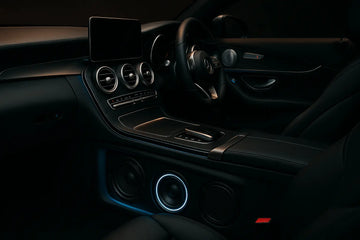Midrange Speakers
Related Collections:
Featured Products
Rainbow SL-PRO-MD80 3" Midrange
AudioCircle Hamburg Line 3" Midrange speakers MK II
Eton PRW80 3" Midrange Driver
Xcelsus XUSM6 6.5″ Midrange / Midbass Driver
Eton PRO80 3" Midrange Driver
Eton RSE80 3" Midrange Driver
Xcelsus XXM325 – Competition Series 3 inch Midrange Driver
Xcelsus XXM425- Competition Series 4 inch midrange speakers
Xcelsus XUSM8 Ultra SQL Series 8″ MIDRANGE DRIVER
Hybrid Audio Legatia X3 3" Fullrange Driver - Pair (Previous Display)
Hybrid Audio Legatia X6 7" Woofer / Midrange - Pair (Previous Display)
What Midrange Speakers Are Designed to Deliver
Midrange speakers are designed to reproduce the frequencies most critical to natural sound—typically between 250Hz and 5kHz. This range contains nearly all of the information that defines human vocals, guitar, piano, brass, and other core instruments. Without a well-defined midrange, music lacks presence and emotion. Midrange drivers fill this gap, ensuring accurate tone, articulation, and detail. Their role is to bridge the deep low frequencies of the subwoofer or midbass driver with the high-frequency output of tweeters, creating a smooth and coherent sound spectrum.
Engineering and Acoustic Design
High-performance midrange speakers use advanced acoustic materials and mechanical precision to achieve balanced, distortion-free playback. Cones are often made from treated paper, polypropylene, or composite fiber for the ideal combination of stiffness and damping. Light cone mass ensures fast transient response, while rigid frames reduce vibration and coloration. Large motor assemblies and shorting rings help maintain linear motion and low distortion at higher volumes. Some midrange drivers feature sealed or back-vented designs to optimize airflow and prevent compression, delivering consistent tone in a variety of enclosures and mounting locations.
Sound Quality and Listening Experience
Midrange speakers define the personality and realism of a sound system. They reproduce vocals with lifelike warmth and presence, giving voices and instruments accurate placement and depth. The best midrange speakers deliver clean, articulate sound without harshness or congestion, even at elevated listening levels. Because they handle the frequencies where the human ear is most sensitive, their tuning determines the overall tonal character of the system. When balanced correctly, midrange drivers produce a natural, engaging soundstage that feels centered and immersive.
Applications and System Integration
Midrange speakers are a vital part of 3-way or active car audio systems where each driver is dedicated to a specific frequency band. In a typical setup, the subwoofer manages the lows, the midrange covers the mid frequencies, and the tweeter handles the highs. This separation allows each driver to perform with optimal precision. Midrange speakers are often installed in A-pillars, dashboards, or custom door pods for accurate staging and imaging. Their focused frequency range also makes them ideal for competitive sound quality builds that prioritize natural tone and accurate reproduction.
Amplifier Matching and DSP Tuning
Because of their sensitivity and limited frequency range, midrange speakers perform best when powered by a clean, controlled amplifier. Proper power ensures clear dynamics and low distortion without overpowering the driver. When paired with a digital signal processor (DSP), tuning can be refined for crossover frequency, equalization, and time alignment. This precise control allows for seamless integration with other drivers, ensuring a unified soundstage. A well-tuned midrange driver provides the clarity and balance necessary for competition-grade or studio-level sound inside the vehicle.
Build Quality and Durability
Midrange speakers are built to deliver long-term performance under demanding conditions. Their components—frames, cones, surrounds, and coils—are designed to withstand vibration, heat, and extended use. Reinforced baskets eliminate unwanted resonance, and treated surrounds maintain flexibility for consistent performance over time. Vented voice coils and heat-resistant adhesives improve thermal handling and reliability at high power levels. These design choices ensure that midrange speakers continue to produce accurate, distortion-free sound even under heavy use.
Why Midrange Speakers Are Essential for Accurate Sound Reproduction
The midrange is where music becomes lifelike. It’s the portion of the spectrum that carries emotional impact and realism. Without accurate midrange reproduction, even powerful subwoofers and crisp tweeters can’t deliver a natural listening experience. Midrange speakers fill this vital role, ensuring that vocals and instruments sound clear, dynamic, and properly balanced. They are the foundation of every high-end audio system, transforming sound from flat and distant to rich, detailed, and immersive.
This collection features midrange speakers designed for clarity, speed, and tonal accuracy. These products help shoppers choose speakers that deliver authentic midrange performance with smooth integration into multi-way systems. This category supports users who want to achieve realistic, full-bodied sound and professional-level performance through precise midrange reproduction.
Midrange Speakers
Frequently Asked Questions
What is a midrange speaker?
Why are midrange speakers important?
How should I place midrange speakers for optimal performance?
What is speaker sensitivity?
Related Articles

Loudspeakers for Cars: Complete Guide to Upgrading Your Vehicle’s Audio System

Best Car Sub and Speakers for Every Budget in 2025

Best Focused Speaker Technology for Superior Sound Precision















